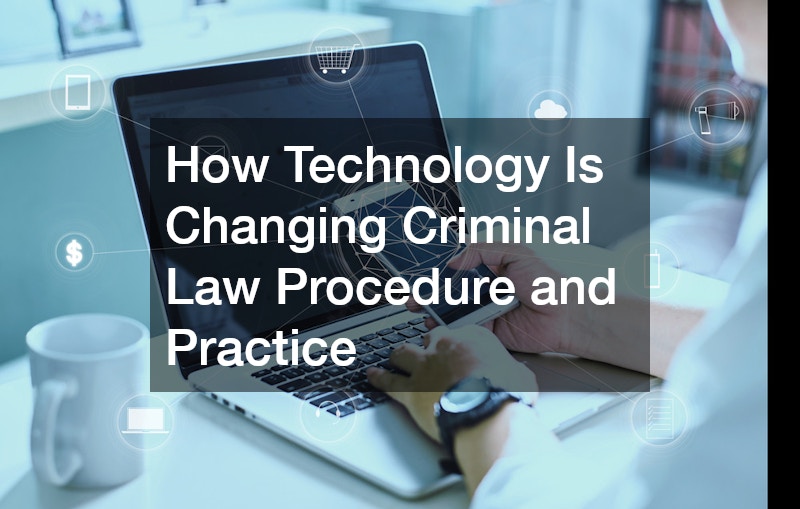Technology has permeated every facet of our lives, including the field of criminal law. This article explores how technological advancements are reshaping criminal law procedure and practice, affecting everything from legal research to courtroom proceedings. The advent of digital tools and artificial intelligence has brought about significant changes, fostering innovations that streamline processes and expedite case resolutions while also raising critical ethical and privacy concerns.
1. How Is Technology Improving Legal Research in Criminal Law?
Legal research, once a labor-intensive process involving mountains of paperwork and countless hours in law libraries, has been revolutionized by technology. The digitization of legal documents and the development of sophisticated databases have enabled legal professionals to access vast amounts of information within seconds. These digital tools allow lawyers to perform comprehensive legal research efficiently, ensuring that no stone is left unturned in building their cases.
AI-driven research tools have further enhanced these capabilities by offering predictive analytics and insights into legal trends. These tools can analyze case law, statutes, and legal opinions to predict outcomes and suggest strategies. As a result, legal professionals can focus more on case strategy and client interaction, relying on technology to handle voluminous and repetitive research tasks.
2. What Role Does Artificial Intelligence Play in Criminal Proceedings?
Artificial Intelligence (AI) is making significant inroads into various aspects of criminal proceedings. From predictive policing algorithms to AI-driven legal analytics, these technologies are used to enhance the efficiency and accuracy of criminal justice processes. AI can assist in reviewing vast quantities of evidence, identifying patterns, and even predicting criminal behavior, thus aiding law enforcement agencies in crime prevention and investigation.
AI’s role in courtroom proceedings is also expanding. AI tools can help in the real-time transcription of court hearings, translation services, and even jury selection by analyzing potential jurors’ backgrounds and biases. The increasing presence of AI in the courtroom is designed to increase the pace of justice and reduce human error, ensuring more precise and less biased outcomes.
3. How Is Technology Changing Evidence Collection and Presentation?
Modern technological tools have radically transformed how evidence is collected and presented in criminal cases. Digital forensics now plays a crucial role, with experts able to retrieve and analyze data from electronic devices to gather evidence. This includes anything from call logs and emails to more sophisticated data like encryption keys or deleted files, all contributing valuable evidence in investigations.
Additionally, technologies such as body-worn cameras and surveillance systems provide incontrovertible evidence that can be used in court to support prosecutions or defenses. These tools offer a new level of transparency and can be pivotal in either corroborating testimonies or contesting claims made during trials.
4. In What Ways Does Technology Influence Privacy and Surveillance in Criminal Law?
The intersection of technology and privacy rights is a significant concern in the realm of criminal law. As surveillance technologies advance, the balance between effective law enforcement and the protection of individual privacy rights becomes increasingly precarious. Technologies like facial recognition, GPS tracking, and social media monitoring are powerful tools for law enforcement but raise questions about the potential for misuse and overreach.
Legal systems worldwide are grappling with these issues, developing new frameworks and guidelines to ensure that surveillance technologies are deployed responsibly and that citizens’ privacy rights are safeguarded. This includes setting clear limits on surveillance activities and ensuring transparency and accountability for their use.
Moreover, data privacy laws, such as the General Data Protection Regulation (GDPR) in Europe, underscore the necessity of balancing technology’s benefits with individual rights. As technology continues to evolve, so too must our legal frameworks, ensuring that the reach of surveillance does not infringe unduly on personal freedoms.
5. How Are Virtual Courtrooms and Remote Trials Shaping Criminal Law Practice?
The advent of virtual courtrooms and remote trials represents a significant shift in criminal law practice, a change hastened by the global pandemic. These technologies allow for proceedings to continue without the need for physical presence, ensuring that the wheels of justice keep turning even under challenging circumstances. Virtual courtrooms facilitate greater access to justice, especially for individuals in remote areas or those with mobility issues.
Remote proceedings use various technologies to simulate traditional court settings and maintain procedural integrity. Video conferencing tools enable lawyers, clients, and judges to interact in real-time, while electronic filing systems allow for documentation to be submitted and reviewed conveniently. These innovations are especially critical in managing case backlogs and ensuring timely resolutions.
The integration of technology in criminal law is both transformative and challenging. While it offers numerous efficiencies and new capabilities, it also prompts a reevaluation of traditional legal principles and underscores the need for balanced implementation. By harnessing the potential of technological advancements while maintaining a vigilant eye on ethical and privacy considerations, the criminal justice system can evolve to meet the demands of a rapidly changing world, ultimately enhancing the pursuit of justice.







